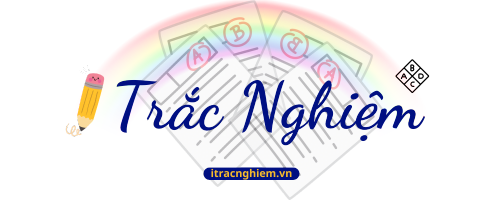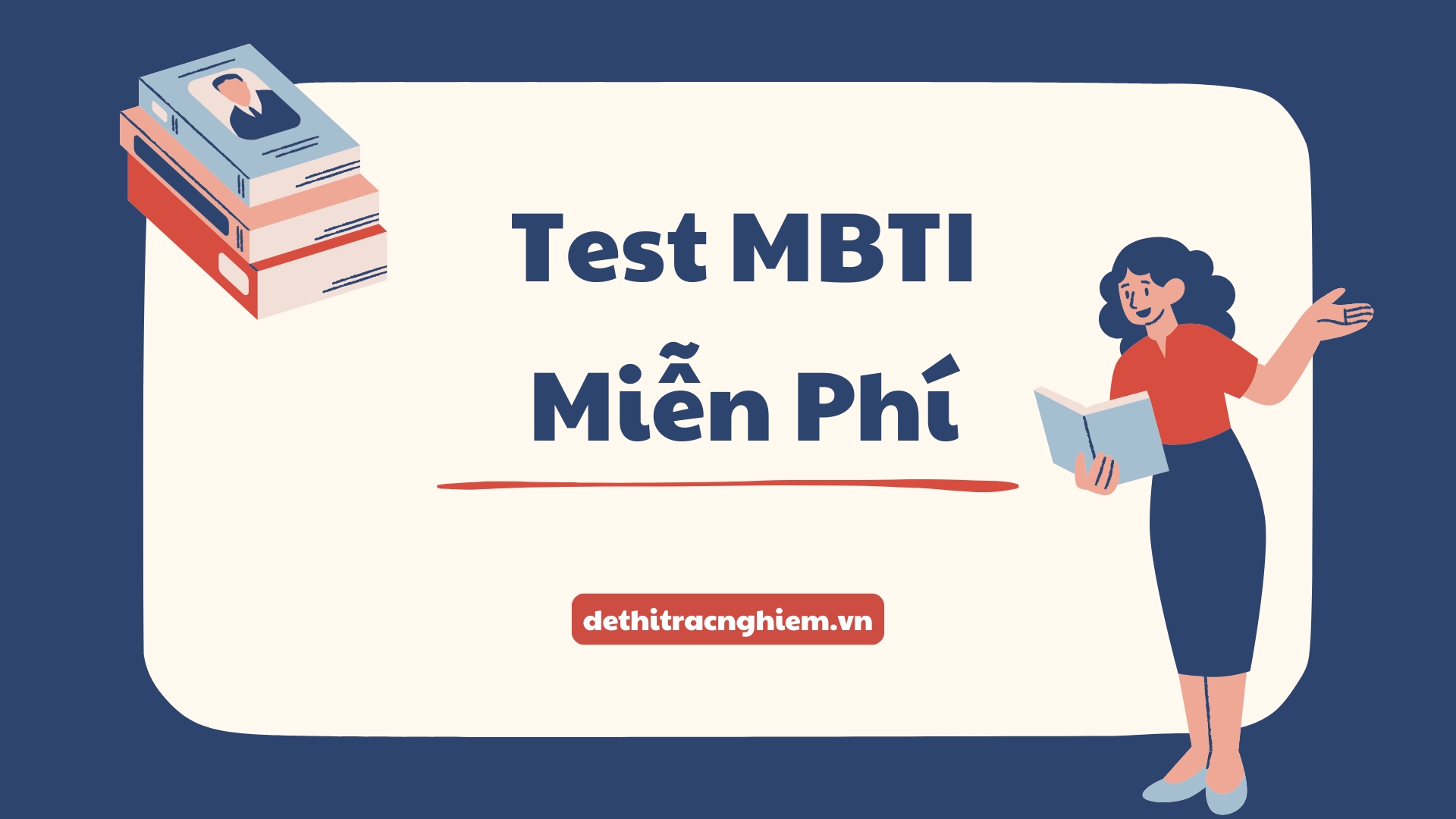Trắc Nghiệm Quản Trị Nguồn Nhân Lực Tiếng Anh là bài kiểm tra kiến thức chuyên ngành bằng ngôn ngữ Anh, thuộc học phần Human Resource Management, thường được giảng dạy bằng tiếng Anh trong các chương trình đào tạo quốc tế hoặc chương trình liên kết tại các trường đại học như Trường Đại học Ngoại Thương (FTU). Đề đại học tham khảo do ThS. Nguyễn Thị Mai Anh – giảng viên Chương trình Chất lượng cao, Khoa Quản trị Kinh doanh – FTU biên soạn vào năm 2023. Nội dung đề thi bằng tiếng Anh bao gồm các khái niệm cốt lõi về HRM, từ recruitment & selection, performance appraisal, training & development cho đến compensation & benefits, và employee relations.
Bộ đề Trắc Nghiệm Quản Trị Nguồn Nhân Lực Tiếng Anh trên Dethitracnghiem.vn được xây dựng với giao diện song ngữ, giúp sinh viên dễ dàng làm quen với thuật ngữ chuyên ngành trong môi trường học tập quốc tế. Các câu hỏi bám sát giáo trình Human Resource Management chuẩn quốc tế, có đáp án chi tiết kèm giải thích bằng tiếng Anh, hỗ trợ hiệu quả cho việc ôn tập và luyện thi đầu ra các môn chuyên ngành bằng tiếng Anh. Đây là tài liệu lý tưởng cho sinh viên đang theo học chương trình quốc tế hoặc chuẩn bị cho các kỳ thi HRM bằng tiếng Anh tại các trường đại học kinh tế trên toàn quốc.
Hãy cùng dethitracnghiem.vn khám phá bộ đề này và kiểm tra ngay kiến thức của bạn!
Trắc Nghiệm Môn Quản Trị Nguồn Nhân Lực Tiếng Anh
Câu 1. Human Resource Management (HRM) is primarily concerned with:
A. The management of financial and material resources.
B. The management of people within organizations to achieve organizational goals.
C. The marketing of products and services to customers.
D. The development of new production technologies.
Câu 2. The primary purpose of Strategic Human Resource Management (SHRM) is to:
A. Ensure all HR administrative tasks are completed efficiently.
B. Reduce the total number of employees in the organization.
C. Align HR policies and practices with the overall strategic goals of the business.
D. Focus exclusively on recruiting high-level executives.
Câu 3. Which of the following is an external factor that influences an organization’s HRM policies?
A. The organization’s corporate culture.
B. The company’s strategic objectives.
C. Labor market conditions and legal regulations.
D. The skill level of the current workforce.
Câu 4. The two primary outputs of a thorough Job Analysis are:
A. The performance appraisal and the compensation plan.
B. The recruitment advertisement and the interview questions.
C. The organizational chart and the company budget.
D. The job description and the job specification.
Câu 5. A “job specification” primarily describes:
A. The tasks, duties, and responsibilities of a job.
B. The knowledge, skills, abilities, and other characteristics (KSAOs) required to perform the job.
C. The reporting relationships and the department where the job is located.
D. The salary range and benefits associated with the job.
Câu 6. What is a key advantage of using internal recruitment to fill a vacant position?
A. It brings new ideas and perspectives into the organization.
B. It is the best way to increase workforce diversity.
C. It boosts morale of existing employees and is often less costly.
D. The pool of potential applicants is always larger.
Câu 7. Posting a job opening on LinkedIn or a company’s public website is an example of:
A. Internal recruitment.
B. Employee referral program.
C. External recruitment.
D. Succession planning.
Câu 8. The main goal of the employee selection process is to:
A. Hire the candidate who asks for the lowest salary.
B. Fill the vacant position as quickly as possible.
C. Predict which candidates will be the most successful in the job and fit the culture.
D. Ensure that all applicants receive a job offer.
Câu 9. In a “behavioral interview,” the interviewer asks the candidate to:
A. Describe how they would handle a hypothetical future situation.
B. Provide specific examples of how they have handled past situations.
C. Answer questions about their personal hobbies and interests.
D. Take a standardized personality test.
Câu 10. Human Resource Planning (HRP) is the process of:
A. Planning the annual company picnic and holiday party.
B. Forecasting an organization’s future demand for and supply of employees.
C. Designing the layout of the office space.
D. Only scheduling daily work shifts for employees.
Câu 11. The main difference between “training” and “development” is that training focuses on _______, while development focuses on _______.
B. current job; future jobs and career growth
A. future jobs; current job
C. managers; non-managerial employees
D. non-managerial employees; managers
Câu 12. The first step in designing any training program should be:
A. Choosing the training method (e.g., online, in-person).
B. Conducting a needs assessment to identify gaps in skills or knowledge.
C. Evaluating the effectiveness of the program.
D. Budgeting for the training materials.
Câu 13. On-the-job training (OJT) is a method where:
A. Employees are sent to an external university for a degree program.
B. Employees learn by watching pre-recorded videos at home.
C. Employees learn the job by actually performing it under the guidance of an experienced colleague or manager.
D. Employees engage in complex simulations and case studies in a classroom.
Câu 14. Performance Appraisal is a process primarily used to:
A. Find reasons to discipline or fire employees.
B. Evaluate an employee’s performance and provide constructive feedback for improvement.
C. Compare an employee’s salary with those at competing companies.
D. Administer psychological tests to employees.
Câu 15. A manager who rates an employee highly on all criteria simply because the employee is very good at one specific task is committing which type of appraisal error?
A. Central Tendency Error.
B. Leniency Error.
C. Halo Effect.
D. Recency Error.
Câu 16. Which of the following is an example of indirect financial compensation?
A. Monthly salary.
B. Performance-based bonus.
C. Health insurance provided by the company.
D. Sales commission.
Câu 17. A company’s “total rewards” strategy includes:
A. Only the base salary paid to an employee.
B. Only non-financial rewards like a positive work environment.
C. All forms of financial compensation, benefits, and non-financial rewards.
D. Only the year-end bonus.
Câu 18. The primary goal of a job evaluation is to:
A. Determine the relative worth of jobs within an organization to ensure internal equity.
B. Evaluate the performance of the person currently holding the job.
C. Compare the company’s products with those of its competitors.
D. Set sales targets for the marketing department.
Câu 19. According to Herzberg’s Two-Factor Theory, factors such as salary and working conditions are considered:
A. Motivators, which lead to high satisfaction.
B. Hygiene factors, which can cause dissatisfaction if absent but do not necessarily motivate.
C. Intrinsic rewards, which are self-generated.
D. Performance indicators.
Câu 20. An “exit interview” is a tool used by HR to:
A. Persuade a departing employee to stay with the company.
B. Understand the reasons for an employee’s resignation to identify potential organizational problems.
C. Conduct a final performance review of the departing employee.
D. Complete the necessary paperwork for an employee’s termination.
Câu 21. A Human Resource Information System (HRIS) is best described as:
A. A physical library of HR books and manuals.
B. An integrated system of software used to gather, store, and analyze data about an organization’s human resources.
C. A committee that resolves employee disputes.
D. A manual filing system for employee records.
Câu 22. “Employer Branding” refers to the process of:
A. Designing the logo for the company’s products.
B. Promoting the company as an attractive and desirable place to work to attract top talent.
C. Advertising job openings only to internal employees.
D. Creating brand names for different HR departments.
Câu 23. Managing a diverse workforce effectively is a key HRM challenge because it can lead to:
A. Less creativity and poorer problem-solving.
B. A less adaptable and flexible organization.
C. A need for more complex and sensitive communication and management styles.
D. A decrease in the company’s ability to understand different markets.
Câu 24. The term “gig economy” refers to a labor market characterized by:
A. A prevalence of permanent, full-time jobs with a single employer.
B. A prevalence of short-term contracts or freelance work as opposed to permanent jobs.
C. A system where all employees are paid the exact same wage.
D. A focus on agricultural and farming jobs.
Câu 25. In the context of HRM, ethics primarily deals with:
A. Determining what is right and wrong in workplace decisions and actions.
B. Maximizing corporate profits at all costs.
C. Following the law, and nothing more.
D. The personal, non-work-related conduct of employees.
Câu 26. The primary role of a labor union is to:
A. Represent management’s interests in negotiations.
B. Act as a collective voice for employees to negotiate wages, benefits, and working conditions with management.
C. Provide financial loans to the company.
D. Manage the day-to-day operations of the business.
Câu 27. What does the term “work-life balance” refer to?
A. The balance between the number of hours worked and the number of hours spent on a computer.
B. The proper equilibrium between an employee’s professional work and their personal life.
C. Ensuring that all employees work the same number of hours each week.
D. A financial statement balancing assets and liabilities.
Câu 28. An employee’s “emotional labor” is most relevant in which type of job?
A. A data analyst working alone.
B. A factory assembly line worker.
C. A customer service representative in a call center.
D. A software programmer.
Câu 29. The process of systematically developing and promoting employees to fill key positions in the future is called:
A. Outsourcing.
B. Downsizing.
C. Succession Planning.
D. Offshoring.
Câu 30. The use of HR Analytics involves:
A. Guessing future HR needs based on intuition.
B. Manually counting the number of employees in the company.
C. Using data and statistical methods to measure the impact of HR activities and make better decisions.
D. Having informal conversations with employees to gauge morale.




